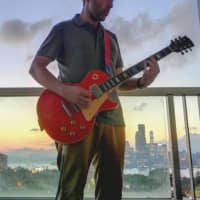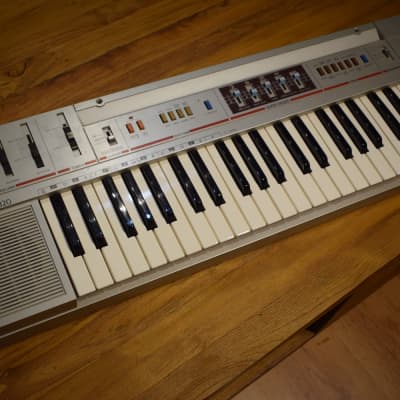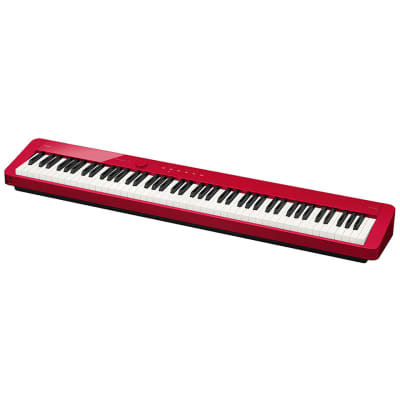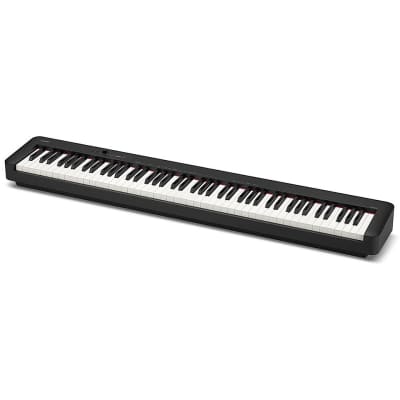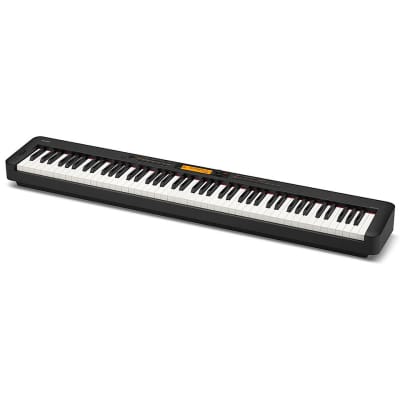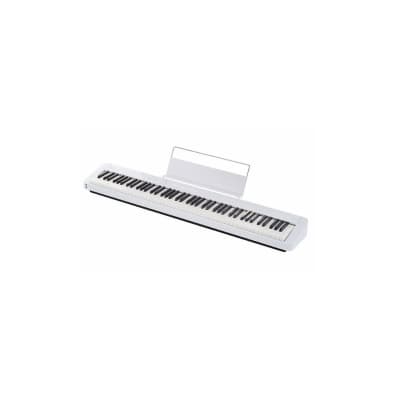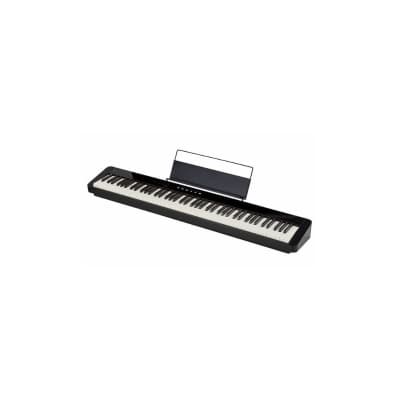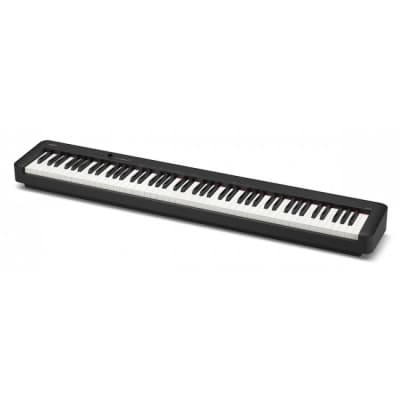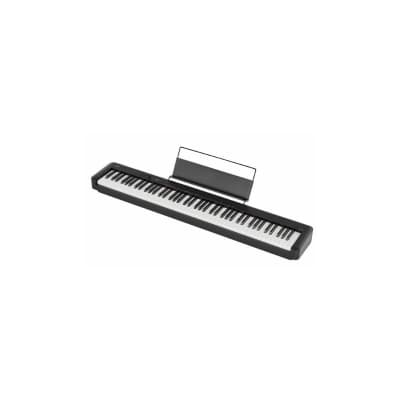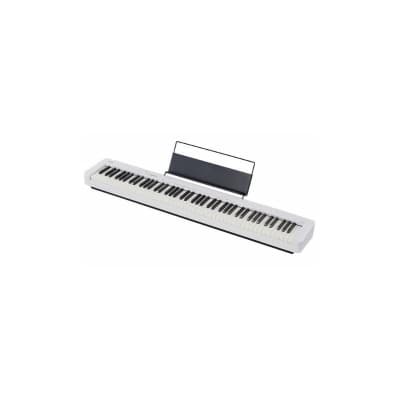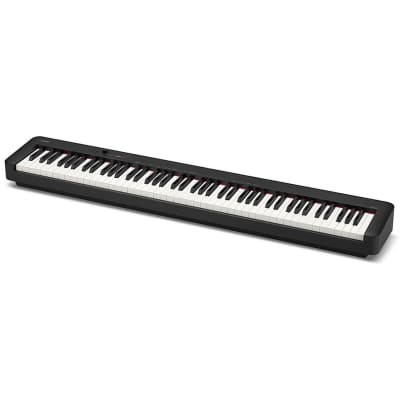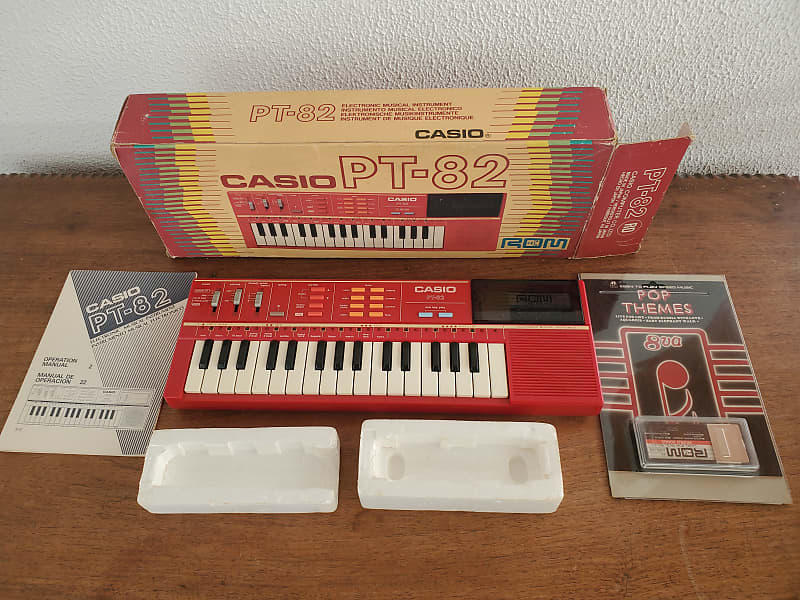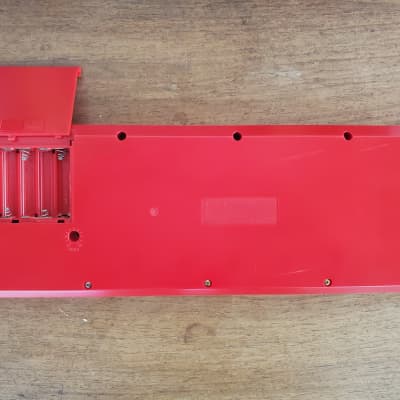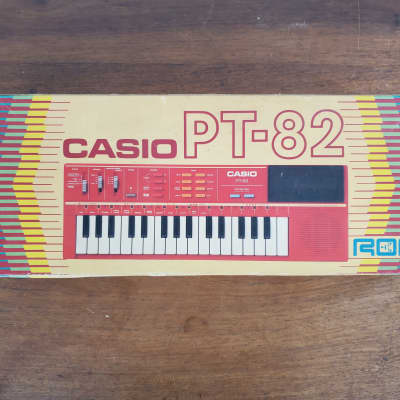This keyboard from 1986 has many similarities with the Casio , but includes a "melody guide" key lighting feature for music teaching (not the keys itself light up but a row of small LEDs above them) and a ROM- Pack music cartridge slot. Unfortunately this instrument is missing the great built-in synthesizer, sequencer and 3 octave switch of the VL-Tone.
Although the music playback from the ROM- Pack includes wonderful polyphonic accompaniments, the player can play own musics only monophonic with thin and dull sounding blip rhythms. A bit unusual is that this white keyboard has brightly coloured orange and red buttons and red lines while Casio normally preferred pastel colours. Also a red case version of the PT-82 was made. In 1987 it was re-released in grey as .
main features:
32 mini keys
built-in speaker (with unpleasant, loud mid-range resonance)
monophonic main voice
8 OBS preset sounds {violin, organ, harpsichord, piano, celesta, trumpet, clarinet, flute}
12 preset rhythms {rock, disco, 16 beat, swing 2 beat, swing 4 beat, samba, bossa nova, beguine, tango, march, slow rock, waltz}
volume switch (5 steps)
tempo +/- buttons (16 steps?)
ROM- Pack music cartridge slot for melody guide and "auto play" (jukebox mode)
"melody guide" keyboard play training feature with key lighting (32 red & green LEDs above the keys), 4 levels and automatic rating
2 "one key play" buttons (to step note by note through ROM musics)
semi- analogue sound generator similar like VL-1 (only monophonic keyboard play, but additional 4 note polyphonic accompaniment during automatic ROM music play). The digital envelopes (with audible zipper noise) are linear and thus sounds unrealistic because they fade silent too soon.
rhythms consist of dull and distorted digital (squarewave?) blips + simple shift register noise {base, low tom, high tom, snare, cymbal}
CPU= "HD61703B01, 5L 13"
tuning adjustment trimmer
headphone and power supply jack
notes: The PT-82 was likely intended as a technically simplified successor of the . The speaker has an unpleasant, loud mid- range resonance. The main voice sounds are the same like with the PT-80, but tend to sound a little thinner and harsher. These sounds resemble much a ; unfortunately they don't include the famous "fantasy" sound of the latter. Although the musics from ROM- Packs play with nicely orchestrated accompaniment, the player can play own musics only monophonic with a simple rhythm and no accompaniment at all. Due to various other "Casio PT" keyboards (e.g. or PT-80) had a set of additional buttons to the left of the keyboard to play chords, I searched also for such keyboard matrix eastereggs, but yet found none. The distorted percussion sounds a bit harsh, very colourless, and really thin and boring (like when blip drums from a PT-30 keyboard would have been resampled at an extremely low resolution and sample rate which removes all dynamics). The rhythm patterns resemble the PT-80, but are not identical (e.g. blip instead of popping base drum). Much like with the VL-Tone 1, the harpsichord sound suffers from a too slow attack rate, which makes it unrealistic. In the plastic case of my PT-82 was an embossed mark that seems to be the manufacturing date 86-02-08. The hardware is much simpler than PT-80 and contains far less analogue components; with my PT-82 one of the red key lighting LEDs was faulty and had to be replaced.
When the instrument is switched on, it plays a tone scale (8 notes) while a light runs from left to right on the LED chain. The instrument was sold with the Casio ROM- Pack . The ROM- Pack cartridge employs the same conductive carbonized silicone rubber connector that is used in many LCD watch displays. (I had to clean mine and the contact row on the PCB with isopropanol to make it function reliable.)
More interesting is that the musics from it can be used with "melody guide" training feature, in which a flashing LED (next key) and a lit LED (current key) in the LED chain above the keys teach monophonic keyboard play. It has 4 training levels {1= with light, waits for correct key, 2= with light, no waiting, 3= without light, waits for correct key, 4= without light, no waiting}. After finishing a piece of music, the player can press the "rating" button to see how good he has played. To show this, a sort-of "wheel of fortune" noise effect is played while a light runs multiple times from left to right above the keys. The light turns slower and then stops at a certain key. The better the player has played (less wrong noted and timing flaws), the further right it stops with a short jingle that depending on how good the player was {"* TRY AGAIN"= falling notes, "** FAIR"= very disharmonic clip of "Unterlanders Heimweh", "*** GOOD"= fanfare, "**** EXCELLENT"= different fanfare}. As a sound effect, the rating jingles can be also started by pressing the "rating" button while the mode switch is set to "play" instead of "melody guide". In this case the melody guide level select switch selects which of the 4 jingles is played.
